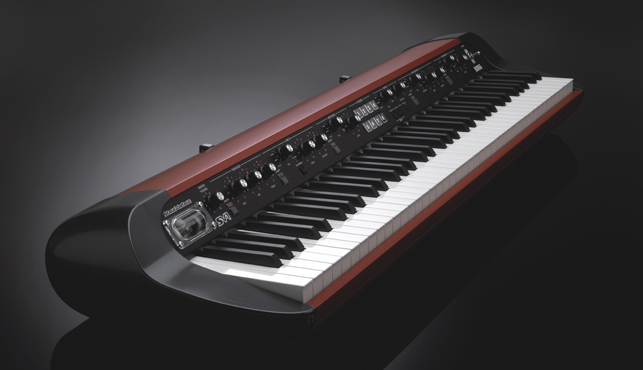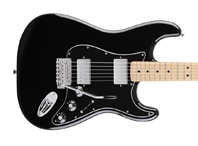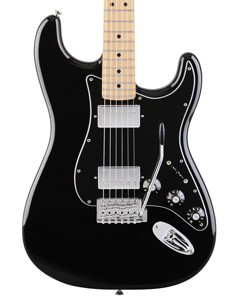Vintage sounds
We’ve visited Korg’s European design hub before [D3D Feb 2009], but were impressed even further with its design for a hi-tech electric piano with a distinct vintage feel.

The Korg SV-1 Stage Vintage Piano has been designed with performance in mind
Korg wanted to create a compendium of its best vintage electric piano, funky clav, organ, strings and acoustic piano sounds, all in a single instrument, and the design office were happy to provide a similarly old school appearance.
The Stage Vintage Piano (SV-1) has a curved appearance, an analogue-style array of switches and knobs, and a distinctive metallic finish, and has already gained a legion of professional musician fans.
The structure of the SV-1 has been closely studied to emphasise both the performance aspect, with an extreme user-friendly analogical interface, and the concept of portability, with reduced size and weight.
Head of design Paolo Capeci worked on hundreds of initial sketches (he explains that this was the hardest part) before running them past the engineers to ensure the design was sound for all the electronic inners, and an initial 2D CAD model was built as a mechanical guide.
Capeci continued the process by taking all the sketches and the 2D guidelines into SolidThinking to produce an accurate 3D model that could be used for both the renderings and the geometric data for the engineers.
“I use several different softwares,” explains Capeci. “SolidThinking with its Construction History feature allowed me to manage the frequent modifications of the 3D project. I then used 3ds Max for the renderings.
“My colleagues at the technical office engineered my SolidThinking 3D with Think3. In this way we are able to get absolute control through all stages of the project, from the conception to the mould setting-up.”
It might have a vintage appearance, but everything within, and the techniques used to design it, are very much 21st century.
www.korg.com
Rock and roll star
Fender guitars are synonymous with some of the biggest names in music including Eric Clapton, George Harrison, Jimi Hendrix and Buddy Holly.
Add to that the legions of amateurs greasing up music store windows with their noses pressed against the glass, and they are desired items of beauty with a massive following worldwide.
With a collection of models that have barely changed since their introduction, it’s almost surprising to see how much the company is developing the design and manufacturing process.
Using SolidWorks, the process of tooling would not have been cost effective any other way. By working with 3D modelling, the design team were able to reduce hazardous manual operations on production by moving as many Shaper and Pin Router operations as possible onto the CNC machines.
From the company’s manufacturing headquarters based in Corona, California, senior manufacturing engineer Glenn Dominick explains that switching to 3D models has a variety of benefits.
The process is safer for those building the guitars, by using more machines for the difficult parts, such as Shaper and Pin Router operations.
“We are also able to locate the guitars more accurately and securely on our CNC machines to produce a more consistent product at a lower cost, and reduce the overall quantity of tooling.”
Having a 3D model to manufacture from also has the benefits of being able to add new models easily and change any configurations quickly.
“SolidWorks made the task much faster and more accurate than if we stayed with the 2D methods,” comments Dominick.
Using the Interference tool within SolidWorks, Dominick and his team were able to verify that all the parts would fit correctly before programming the machines, while using CAMWorks and MasterCAM software for tool path verification.
“The most difficult elements to achieve for us are interfaces (volutes) between the radiused guitar neck back shapes and the flat head caps. “It may look great on the screen, but it has to feel great to the guitarist.”
www.fender.com

The making of the instruments that make the music








